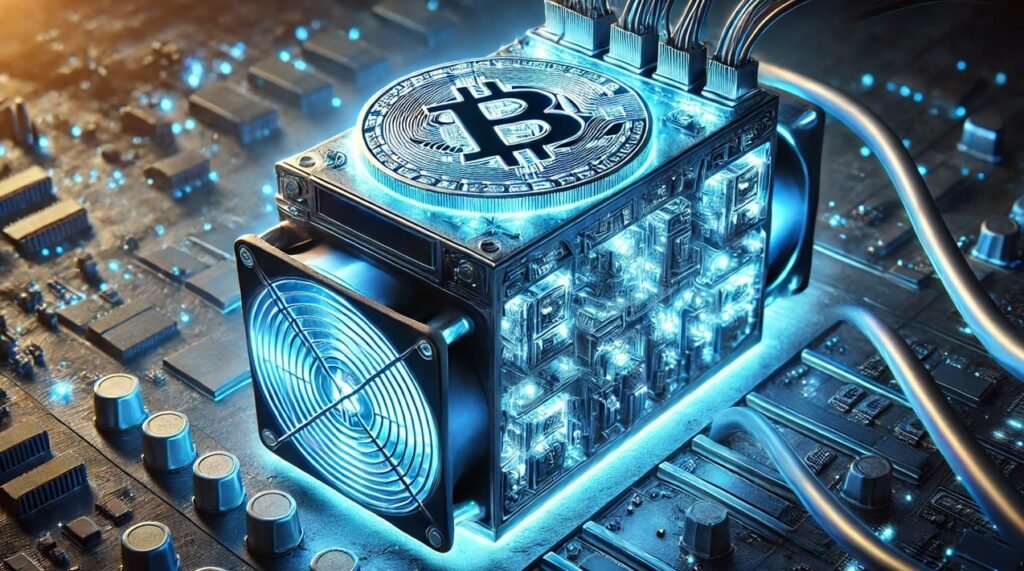The cryptocurrency mining landscape has evolved dramatically, and finding the best Bitcoin mining ASIC 2025 has become more crucial than ever for serious miners. As Bitcoin’s network difficulty continues to rise and energy costs fluctuate globally, selecting the right Application-Specific Integrated Circuit (ASIC) miner can mean the difference between substantial profits and devastating losses. In this comprehensive guide, we’ll explore the top-performing ASIC miners that dominate the market in 2025, analyze their profitability potential, and provide you with the expert insights needed to make informed investment decisions.
Whether you’re a seasoned mining veteran or a newcomer to the Bitcoin mining world, understanding which ASIC miners deliver the best return on investment is essential. The best Bitcoin mining ASIC 2025 models combine exceptional hash rates, energy efficiency, and proven reliability to ensure your mining operations remain profitable in an increasingly competitive environment. Let’s dive deep into the world of Bitcoin mining hardware and discover which machines will maximize your mining returns this year.
Top 10 Best Bitcoin Mining ASIC 2025 Models
The mining hardware market has witnessed significant innovations in 2025, with manufacturers pushing the boundaries of efficiency and performance. Here are the leading contenders for the best Bitcoin mining ASIC 2025 title:
Antminer S21 Pro – The Efficiency Champion
The Antminer S21 Pro stands out as one of the most energy-efficient miners available in 2025. With a hash rate of 234 TH/s and power consumption of just 3,510W, it achieves an impressive efficiency rating of 15 J/TH. This exceptional efficiency makes it ideal for miners operating in regions with higher electricity costs.
Key specifications include advanced cooling systems, improved chip architecture, and enhanced durability for 24/7 operations. The S21 Pro’s compact design allows for better heat dissipation while maintaining optimal performance levels throughout extended mining sessions.
WhatsMiner M60S – Raw Power Performance
WhatsMiner’s M60S delivers incredible raw hash power with 172 TH/s while consuming 3,344W of electricity. This miner excels in environments where electricity costs are minimal, allowing miners to maximize their hash rate contribution to mining pools.
The M60S features robust construction, advanced thermal management, and optimized firmware that ensures consistent performance even under challenging operating conditions. Its modular design simplifies maintenance and reduces downtime during servicing.
Canaan AvalonMiner A1466 – Budget-Friendly Excellence
For miners seeking cost-effective entry into Bitcoin mining, the AvalonMiner A1466 provides excellent value with 150 TH/s hash rate and 3,420W power consumption. While not the most efficient option, its lower initial investment makes it attractive for smaller mining operations.
The A1466 incorporates Canaan’s latest 7nm chip technology, delivering reliable performance at a competitive price point. Its user-friendly interface and straightforward setup process make it ideal for miners new to ASIC hardware management.
Profitability Analysis: Which ASIC Delivers Maximum Returns?

Understanding profitability extends beyond simple hash rate comparisons. The best Bitcoin mining ASIC 2025 must balance initial investment costs, operational expenses, and revenue potential to deliver sustainable returns.
ROI Calculations and Break-Even Analysis
Current market conditions suggest that miners with access to electricity rates below $0.08 per kWh can achieve break-even points within 12-18 months using top-tier ASIC miners. However, profitability varies significantly based on several critical factors:
Electricity costs remain the primary determinant of mining profitability, typically accounting for 60-70% of operational expenses. Miners in regions with renewable energy access or subsidized electricity rates enjoy substantial competitive advantages.
Bitcoin’s price volatility directly impacts mining revenues, with price increases amplifying profitability while downturns can quickly erode margins. Conservative projections should account for price fluctuations when calculating expected returns.
Network difficulty adjustments occur approximately every two weeks, affecting individual miners’ share of block rewards. As more miners join the network, difficulty increases, reducing individual profitability unless offset by efficiency improvements or Bitcoin price appreciation.
Energy Efficiency vs Hash Rate Trade-offs
Modern ASIC miners present interesting trade-offs between raw hash power and energy efficiency. High-efficiency models like the Antminer S21 Pro excel in environments with expensive electricity, while high hash rate miners like the WhatsMiner M60S maximize returns where power costs are minimal.
Optimal miner selection depends heavily on local electricity rates, cooling requirements, and available infrastructure. Miners should calculate total cost of ownership, including cooling, maintenance, and facility costs, when determining the best Bitcoin mining ASIC 2025 for their specific situation.
Technical Specifications Comparison
Hash Rate Performance Analysis
Hash rate represents the computational power each ASIC miner contributes to the Bitcoin network. Higher hash rates increase the probability of earning block rewards but must be balanced against power consumption and acquisition costs.
The leading best Bitcoin mining ASIC 2025 models deliver hash rates ranging from 150 TH/s to 234 TH/s, representing significant improvements over previous generations. These performance gains result from advanced chip architectures, improved manufacturing processes, and optimized cooling solutions.
Power Consumption and Efficiency Metrics
Power efficiency, measured in joules per terahash (J/TH), determines operational costs and environmental impact. The most efficient 2025 ASIC miners achieve efficiency ratings below 20 J/TH, substantially improving upon older generation hardware.
Thermal design power (TDP) specifications indicate cooling requirements and facility infrastructure needs. Proper ventilation and temperature control are essential for maintaining optimal performance and extending hardware lifespan.
Setup and Installation Guide
Infrastructure Requirements
Successful ASIC mining requires robust electrical infrastructure capable of handling high power loads consistently. Most best Bitcoin mining ASIC 2025 models require dedicated 220V circuits with appropriate amperage capacity to prevent electrical issues.
Proper ventilation systems are crucial for maintaining optimal operating temperatures and preventing thermal throttling. Miners should plan for adequate airflow, ambient temperature control, and noise management, especially in residential settings.
Network connectivity requirements are relatively modest, but stable internet connections ensure consistent mining pool communication and minimize downtime. Ethernet connections provide superior reliability compared to wireless alternatives.
Configuration and Optimization
Initial setup procedures vary by manufacturer but generally involve web-based configuration interfaces accessible through local network connections. Miners must configure pool settings, wallet addresses, and performance parameters for optimal operation.
Firmware updates regularly improve performance, fix bugs, and enhance security. Staying current with manufacturer-recommended firmware versions ensures access to the latest optimizations and features.
Monitoring software helps track performance metrics, temperature readings, and error rates. Proactive monitoring prevents issues that could result in costly downtime or hardware damage.
Best Bitcoin Mining ASIC 2025: Buying Guide and Recommendations
Where to Purchase Legitimate ASIC Miners
Authorized distributors provide warranty coverage, genuine hardware, and customer support essential for successful mining operations. Purchasing from reputable sources reduces risks of counterfeit products or fraudulent transactions.
Direct manufacturer purchases often provide the best pricing and warranty terms but may involve longer shipping times or minimum order quantities. Established manufacturers like Bitmain, WhatsMiner, and Canaan maintain global distribution networks.
Secondary markets offer opportunities to acquire used equipment at reduced prices, but buyers should carefully evaluate condition, warranty status, and seller reputation. Due diligence is essential when purchasing used mining hardware.
Timing Your Purchase Strategy
Market timing significantly impacts ASIC acquisition costs and profitability potential. Prices typically fluctuate based on Bitcoin’s price movements, manufacturing cycles, and supply chain constraints.
Bear market conditions often present opportunities to acquire hardware at reduced prices, while bull markets may create supply shortages and premium pricing. Patient buyers can capitalize on market cycles to optimize their investment timing.
Pre-order strategies allow access to latest generation hardware but require careful evaluation of delivery timelines and market conditions at expected delivery dates.
Maintenance and Troubleshooting
Preventive Maintenance Procedures
Regular maintenance schedules extend hardware lifespan and maintain optimal performance levels. Cleaning procedures remove dust accumulation that can impede cooling efficiency and cause overheating issues.
Fan replacements represent the most common maintenance requirement, as cooling fans experience continuous operation under demanding conditions. Maintaining spare fans reduces downtime when replacements become necessary.
Thermal paste reapplication may be required after extended operation periods to maintain optimal heat transfer between chips and cooling systems. This advanced maintenance procedure should be performed carefully to avoid damage.
Common Issues and Solutions
Hash rate fluctuations can indicate various issues including temperature problems, network connectivity issues, or hardware degradation. Systematic troubleshooting helps identify root causes and implement appropriate solutions.
Connectivity problems may result from network configuration issues, pool server problems, or local internet service disruptions. Backup pool configurations provide redundancy when primary pools become unavailable.
Temperature-related issues often stem from inadequate cooling, dust accumulation, or ambient temperature increases. Monitoring tools help identify thermal problems before they cause permanent damage.
Future Outlook and Market Trends

Technology Evolution and Next-Generation Features
ASIC manufacturing continues advancing with smaller process nodes, improved chip architectures, and enhanced efficiency ratings. Future generations promise even better performance-per-watt ratios and reduced operational costs.
Integration with renewable energy systems represents a growing trend as miners seek to reduce operational costs and environmental impact. Solar and wind power integration can significantly improve mining profitability in suitable locations.
Artificial intelligence optimization may enhance future ASIC designs through intelligent power management, predictive maintenance capabilities, and adaptive performance tuning based on network conditions.
Regulatory Considerations and Compliance
Mining regulations vary significantly by jurisdiction and continue evolving as governments develop cryptocurrency policies. Miners should stay informed about local regulations affecting hardware imports, operational permits, and tax obligations.
Environmental regulations increasingly impact mining operations, particularly in regions emphasizing carbon reduction goals. Miners may face restrictions or additional costs related to energy consumption and environmental impact.
Grid stability concerns in some regions may result in limitations on high-power industrial operations. Understanding local utility policies helps miners plan appropriate facility locations and power arrangements.
Investment Strategies for ASIC Mining
Portfolio Diversification Approaches
Diversifying across multiple ASIC models can reduce risks associated with individual hardware failures or manufacturer-specific issues. Balanced portfolios might include both high-efficiency and high-hash-rate miners to optimize for different market conditions.
Scaling strategies should consider facility limitations, power availability, and market timing. Gradual expansion allows miners to reinvest profits while managing risk exposure during volatile market periods.
Exit strategies become important when hardware approaches end-of-life or market conditions change. Resale markets, alternative cryptocurrency mining, or equipment liquidation represent various options for recovering investments.
Financing and Leasing Options
Equipment financing can accelerate mining operations without requiring full upfront capital. However, financing costs must be factored into profitability calculations and may extend break-even periods.
Hosting services provide alternative approaches for miners lacking suitable facilities or expertise. Professional hosting can reduce operational complexity while potentially improving efficiency through economies of scale.
Mining pool participation versus solo mining represents another strategic consideration. Pool mining provides more consistent but smaller rewards, while solo mining offers larger but less frequent payouts.
Conclusion
Selecting the best Bitcoin mining ASIC 2025 requires careful consideration of your specific circumstances, including electricity costs, available capital, and risk tolerance. The miners highlighted in this comprehensive guide represent the current leaders in terms of efficiency, performance, and profitability potential.
The Antminer S21 Pro emerges as the top choice for most miners due to its exceptional efficiency and balanced performance characteristics. However, the WhatsMiner M60S and AvalonMiner A1466 offer compelling alternatives depending on your specific requirements and budget constraints.

















